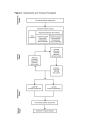Focused Training for Humanitarian Responders in Regional Anesthesia Techniques for a Planned Randomized Controlled Trial in a Disaster Setting
- PMID: 28018749
- PMCID: PMC5145820
- DOI: 10.1371/currents.dis.e75f9f9d977ac8adededb381e3948a04
Focused Training for Humanitarian Responders in Regional Anesthesia Techniques for a Planned Randomized Controlled Trial in a Disaster Setting
Erratum in
-
Correction: Focused Training for Humanitarian Responders in Regional Anesthesia Techniques for a Planned Randomized Controlled Trial in a Disaster Setting.PLoS Curr. 2017 Feb 6;9:ecurrents.dis.14d4a293a1f174e3fd95c1caa63bc2bf. doi: 10.1371/currents.dis.14d4a293a1f174e3fd95c1caa63bc2bf. PLoS Curr. 2017. PMID: 28275525 Free PMC article.
Abstract
Background: Lower extremity trauma during earthquakes accounts for the largest burden of geophysical disaster-related injuries. Insufficient pain management is common in disaster settings, and regional anesthesia (RA) has the potential to reduce pain in injured patients beyond current standards. To date, no prospective research has evaluated the use of RA in a disaster setting. This cross-sectional study assesses knowledge translation and skill acquisition outcomes for lower extremity RA performed with and without ultrasound guidance among a cohort of Médecins Sans Frontières (MSF) volunteers who will function as proceduralists in a planned randomized controlled trial evaluating the efficacy of RA for pain management in an earthquake setting.
Methods: Generalist humanitarian healthcare responders, including both physicians and nurses, were trained in ultrasound guided femoral nerve block (USGFNB) and landmark guided fascia iliaca compartment block (LGFICB) techniques using didactic sessions and interactive simulations during a one-day focused course. Outcome measures evaluated interval knowledge attainment and technical proficiency in performing the RA procedures. Knowledge attainment was assessed via pre- and post-test evaluations and procedural proficiency was evaluated through monitored simulations, with performance of critical actions graded by two independent observers.
Results: Twelve humanitarian response providers were enrolled and completed the trainings and assessments. Knowledge scores significantly increased from a mean pre-test score of 79% to post-test score of 88% (p<0.001). In practical evaluation of the LGFICB, participants correctly performed a median of 15.0 (Interquartile Range (IQR) 14.0-16.0) out of 16 critical actions. For the USGFNB, the median score was also 15.0 (IQR 14.0-16.0) out of 16 critical actions. Inter-rater reliability for completion of critical actions was excellent, with inter-rater agreement of 83.3% and 91.7% for the LGFICB and USGFNB evaluations, respectively.
Discussion: Prior to conducting a trial of RA in a disaster setting, providers need to gain understanding and skills necessary to perform the interventions. This evaluation demonstrated attainment of high knowledge and technical skill scores in both physicians and nurses after a brief training in regional anesthesia techniques. This study demonstrates the feasibility of rapidly training generalist humanitarian responders to provide both LGFICB and USGFNB during humanitarian emergencies.
Similar articles
-
Regional Anesthesia for Painful Injuries after Disasters (RAPID): study protocol for a randomized controlled trial.Trials. 2016 Nov 14;17(1):542. doi: 10.1186/s13063-016-1671-z. Trials. 2016. PMID: 27842565 Free PMC article. Clinical Trial.
-
Residents working with Médecins Sans Frontières: training and pilot evaluation.Scand J Trauma Resusc Emerg Med. 2020 Aug 25;28(1):86. doi: 10.1186/s13049-020-00778-x. Scand J Trauma Resusc Emerg Med. 2020. PMID: 32843062 Free PMC article.
-
Case-based Learning Outperformed Simulation Exercises in Disaster Preparedness Education Among Nursing Trainees in India: A Randomized Controlled Trial.Prehosp Disaster Med. 2016 Oct;31(5):516-23. doi: 10.1017/S1049023X16000789. Epub 2016 Aug 5. Prehosp Disaster Med. 2016. PMID: 27491847 Clinical Trial.
-
Fascia iliaca block, history, technique, and efficacy in clinical practice.Best Pract Res Clin Anaesthesiol. 2019 Dec;33(4):407-413. doi: 10.1016/j.bpa.2019.07.011. Epub 2019 Jul 26. Best Pract Res Clin Anaesthesiol. 2019. PMID: 31791559 Review.
-
The Second American Society of Regional Anesthesia and Pain Medicine Evidence-Based Medicine Assessment of Ultrasound-Guided Regional Anesthesia: Executive Summary.Reg Anesth Pain Med. 2016 Mar-Apr;41(2):181-94. doi: 10.1097/AAP.0000000000000331. Reg Anesth Pain Med. 2016. PMID: 26695878 Review.
Cited by
-
Development of an Anesthesiology Disaster Response Plan.Anesthesiol Clin. 2021 Jun;39(2):245-253. doi: 10.1016/j.anclin.2021.02.001. Epub 2021 Apr 17. Anesthesiol Clin. 2021. PMID: 34024428 Free PMC article. Review.
-
Preparing medical first responders for crises: a systematic literature review of disaster training programs and their effectiveness.Scand J Trauma Resusc Emerg Med. 2022 Dec 24;30(1):76. doi: 10.1186/s13049-022-01056-8. Scand J Trauma Resusc Emerg Med. 2022. PMID: 36566227 Free PMC article.
-
Anaesthesia in austere environments: literature review and considerations for future space exploration missions.NPJ Microgravity. 2018 Feb 23;4:5. doi: 10.1038/s41526-018-0039-y. eCollection 2018. NPJ Microgravity. 2018. PMID: 29507873 Free PMC article. Review.
-
Anaesthetic practices at Gulu Regional Referral Hospital in Northern Uganda, who does what and where? A retrospective study.Hum Resour Health. 2025 Apr 14;23(1):19. doi: 10.1186/s12960-025-00987-4. Hum Resour Health. 2025. PMID: 40229820 Free PMC article.
References
-
- Guha-Sapir D, Vos T. Earthquakes, an Epidemiological Perspective on Patterns and Trends. In: Human Casualties in Earthquakes: Progress in Modelling and Mitigation. New York, New York: Springer, 2011., 13-24.
-
- Centre for Research on the Epidemiology of Disasters. The Human cost of Natural Disasters 2015, A Global Perspective. Accessed 2 April 2016: http://reliefweb.int/sites/reliefweb.int/files/resources/PAND_report.pdf.
-
- Mulvey JM, Awan SU, Qadri AA, Maqsood MA. Profile of injuries arising from the 2005 Kashmir earthquake: the first 72 h. Injury. May 2008;39(5):554-560. - PubMed
-
- Carlson LC, Hirshon JM, Calvello EJ, Pollak AN. Operative care after the Haiti 2010 earthquake: implications for post-disaster definitive care. The American journal of emergency medicine. Feb 2013;31(2):429-431. - PubMed
LinkOut - more resources
Full Text Sources
Other Literature Sources
Miscellaneous


